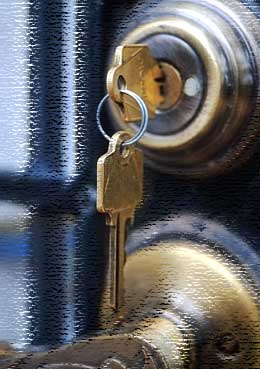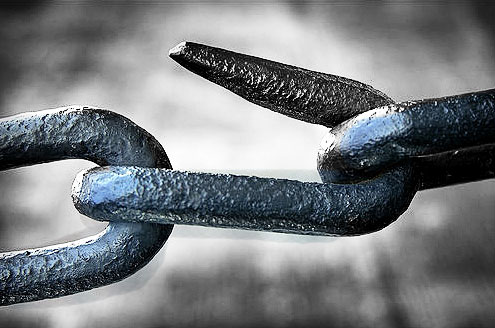Breaking Barriers to Change in Addiction
Those who abuse drugs or alcohol are faced with many barriers
in changing their lives from substance abusers to clean and sober
living. Addiction itself is both biological and psychological
and this must be dealt with in order for change to occur.
 Unlocking Change
Unlocking Change |
|

The first barrier to change
for any kind of treatment program in order for recovery to occur
withdrawal from the drug of choice and dealing with the unpleasant
withdrawal symptoms. Depending upon the drug used and the treatment
program chosen, if any, the withdrawal systems may be extremely
painful and life threatening to mild and barely noticeable. For
instance, some detox
rehab centers offer rapid detox programs under general anesthesia
that provide for minimal withdrawal pain.
Once sobriety is achieve through detoxification, then the addict
will also have to deal with the biological and psychological cravings.
Biological cravings can also be quite severe, but may also be
medically managed by a doctor or rehab facility.
Psychological cravings are
usually dealt with via counseling, group therapies
or other groups such as 12-step groups. Substance abusers are
encouraged to call non-enabling friends, family members, sponsors,
mentors or others when cravings occur in order to get past the
feelings in a constructive manner. Other methods that help some
in dealing with the cravings is physical exercise, eating or drinking
a substitute for the drugs or alcohol, such as chocolate, donuts,
coffee or tea.
Some will argue that this is simply substituting one addiction
for another (ie, alcohol for food), but few will argue that a
pint of whisky, for instance is healthier than a couple of donuts
and on the scale of things, some substitutions, especially in
the beginning stages of recovery are better than staying addicted.

Besides the psychological cravings for the drug of choice,
most addicts will also have a psychological dependence upon
the drugs or alcohol as well. This kind of dependence deals
with an addicts belief systems, self talk, self esteem and
other issues that need to be dealt with through counseling,
group counseling and / or with the aid of 12-step or 12-step
alternative groups.
Many addicts use drugs or
alcohol to begin with in order to try to self-medicate
for other mental or emotional issues such as depression, anxiety,
PTSD, bi-polar disorder or many other issues as well. Once detoxification
has taken place these issues will need to be addressed through
individual and / or group counseling.
Physical pain from car accidents, wartime trauma, cancer
or a whole host of physical ailments can also precipitate
prescription drug abuse.
Along with breaking other barriers to change, the substance
abuser will also need to get help for the underlying physical
pain issues as well.
Another barrier to change that must be broken in order for
healing to occur is for the addict to identify any close relationships
such as spouses, family members or friends that are either
enablers or toxic people. In most cases, for true change to
occur, the addict will need to start to limit time spent with
the enablers and toxic people in their lives. The limitation
may occur naturally such as when the addict is in rehab or
attending 12-step meetings, which takes time away from others,
including the enablers and toxic people. Or, the recovering
substance abuser may need to make a conscious decision for
healthier choices of which people to spend more time with
and which people to spend less time with both in the short
term and as a long-term goal.
Goals setting is also important in breaking barriers. Studies
have shown that those with motivation and clearly defined goals
for recovery and abstinence have a much higher rate of sobriety
than those without clearly defined goals. Most often goal-setting
of this type is accomplished with the aid of a counselor or within
group counseling.
Most alcohol and drug abusers,
over time, tend to isolate themselves from family,
friends and others and may end up surrounded by enablers and toxic
people. This unhealthy support group must be disbanded in order
to break through this barrier to change. This is a huge issue
for most people who may feel that their addict friends or drinking
buddies are their only real friends and the only ones who understand
them. The enablers and toxic people may feel rejected and rebel
at the substance abuser spending less time with them or disowning
them altogether.
The process of disbanding the old unhealthy support group
and building (or rebuilding) and newer healthy support group
will take time, effort and will be needed in order to sustain
sobriety and deal with relapses over the long haul.
Other barrier to change is lack of education and managing
expectations. For instance, addicts need to know that relapse
is part of the recovery and to expect relapse. Through education
of substance abuser about what to expect during the recovery
process, it will help most get back on the wagon when a bump
in the road occurs. By letting know that relapse doesn't mean
failure, it simply means, getting back on the wagon and continuing
forward, this will help many with making a meaningful long-term
recovery and live a lifestyle of sobriety.
Some other barriers to change
that will need to be dealt with in order to assure
long-term recovery include jobs and employment issues, housing,
education, legal issues, transportation and health insurance.
Shame is also an issue that keeps some substance abusers from
seeking help. Overcoming stigma and shame may be deal with in
the confines of a therapist's office or an anonymous group such
as a 12-step group.
Also, some parents fear that if they seek help their children
will be taken from them. Drug and alcohol counselors or therapists
at community clinics are often sought in order to help sort
these matters out who can then refer clients to local legal
counsel to help sift through the legal implications of seeking
help for addictions.
No matter which issues, addicts face, though, many addicts
have faced the same issues before them and now are clean and
sober. An addict may think his or her problems are unique,
but one of the major benefits of seeking help is to break
the isolation and find out that issues with addiction are
more common than not.
|


